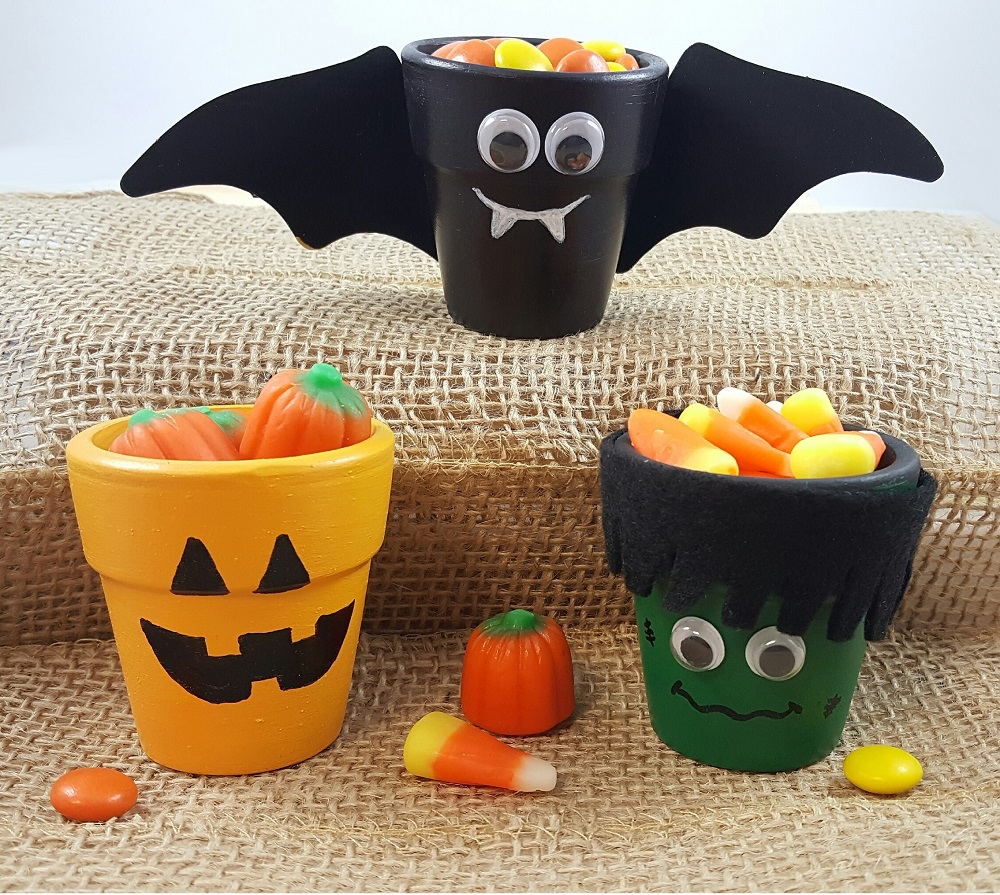Kids can learn about the history and cultural significance of the Day of the Dead Mexican holiday with our Sugar Skulls craft activities! The holiday starts on Halloween and ends on November 2nd. We have a mask craft, velvet art poster pack, and bisque banks to color.
Sugar Skull Masks

Each person can decorate one cardstock sugar skull mask with markers, sequins and glue, and wear it when they are done! This kit makes 24 Sugar Skull Masks. As an alternative to a wearable craft, you could also use them to hang – create a garland with them and hanging them across the ceiling!
Age Group: 6 and up
Materials:
- Sugar Skull Masks 24 pack
- Markers
- Glue
- Sequins (optional)
- Glitter (optional)
TIPS: Open sequins and divide onto reusable containers to make decorating easier. You can also use your own decorating supplies to make your mask even more festive!
Velvet Art Sugar Skulls

Make 24 Velvet Art Sugar Skulls, 4 each of 6 creative skull designs. Each cardstock poster measures 8″ x 10″. Velvet borders make coloring a sure success and the bold black background really make colors pop. Add gemstones, wiggly eyes and other embellishments to make your skull spectacular!
Ceramic Bisque Skull Banks

Our Color-Me™ Skull Banks are unglazed and ready to decorate with paint, markers, crayons and more. Banks feature a coin slot on top and a plastic stopper on the bottom. The pack comes with 12 projects!
History of Day of the Dead
Dia de los Muertos Facts:
- Día de los Muertos (Day of the Dead) is a festival celebrated every November 2 by people in Mexico, parts of Central and South America, and increasingly throughout the United States.
- Day of the Dead is not a sad or scary occasion, but a spirited holiday when people remember and honor family members who have died. All of this is part of the philosophy that death is not something to be feared, but a natural part of life.
- People celebrate in their homes, creating altars (called ofrendas in Spanish) that display portraits, favorite foods and special possessions of their loved ones.
- Families visit the graves of their loved ones, cleaning the headstones and decorating with flowers and bringing food and music.
- The roots of the Day of the Dead are pre-Columbian, and many of the symbols and practices are derived from the indigeneous groups of Meso America (i.e. Maya and Aztec).
- Images of skeletons dancing or doing other comical things are common.

Dia de los Muertos: Glossary of Words:
- Antepasados – “ancestors”; the ones who are given offerings by their families and friends.
- Atole – a hot beverage made with ground corn powder or cornstarch.
- Calacas – skulls and skeletons that are shown in a variety of activities.
- Calaveritas de azucar – sugar skulls that are elaborately decorated. Sugar represents thesweetness of life and skull represents death.
- Cempasuchitl – yellow or orange marigolds that are seen on graves and altars and whose smell and color are believed to attract the spirits and lead them back home.
- Mole – a chocolate-based sauce made with many herbs and spices, usually served on chicken or turkey.
- Ofrenda – “offering,” another word for altar where food, candles, flowers, pictures and mementos are left for the dead.
- Pan de muerto – “bread of the dead,” baked into different shapes (human, bones, etc.) and usually put on the altar.
- Papel picado – “punched paper,” paper banners decorated with elaborate designs.
Fun Facts:
- Indigenous Mexicans believe the soul is eternal and can travel back and forth from this world and the next. The Day of the Dead celebration is based on the belief that the souls of loved ones will come back and visit.
- Mexican cempasúchitl (marigold) is the traditional flower used to honor loved ones. It is yellow like the sun and represents life and hope.
- Candy skulls are part of the tradition. Mexico, in the 17th Century was abundant in sugar but too poor to buy fancy church decorations from Europeans, so locals quickly learned from Catholic friars how to make sugar art for their own religious festivals.
Special thanks to the Smithsonian Institution Latino Center, a great resource for more information and a key source for this guide.
For more Information check out your local Library or these on-line resources:







